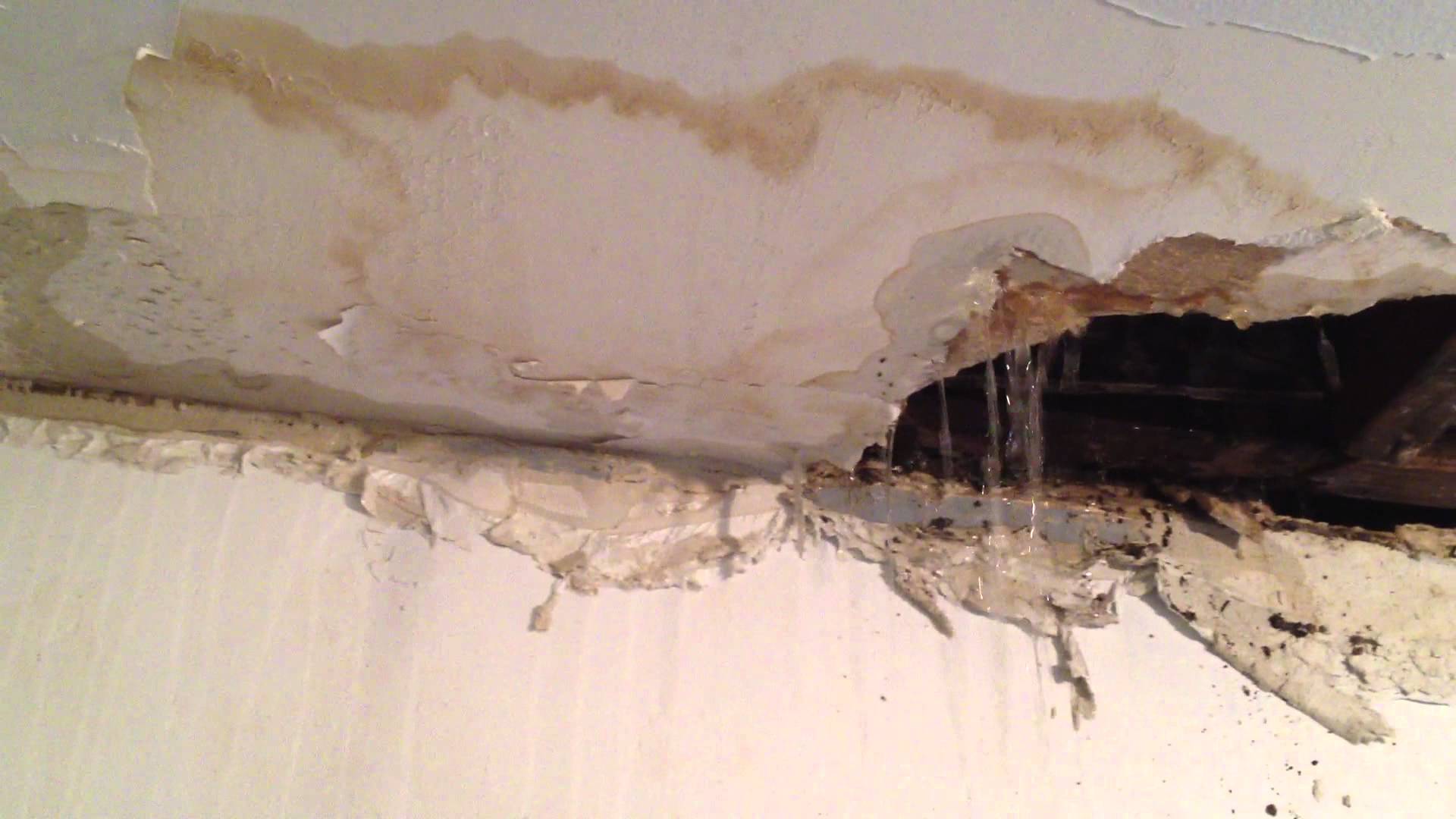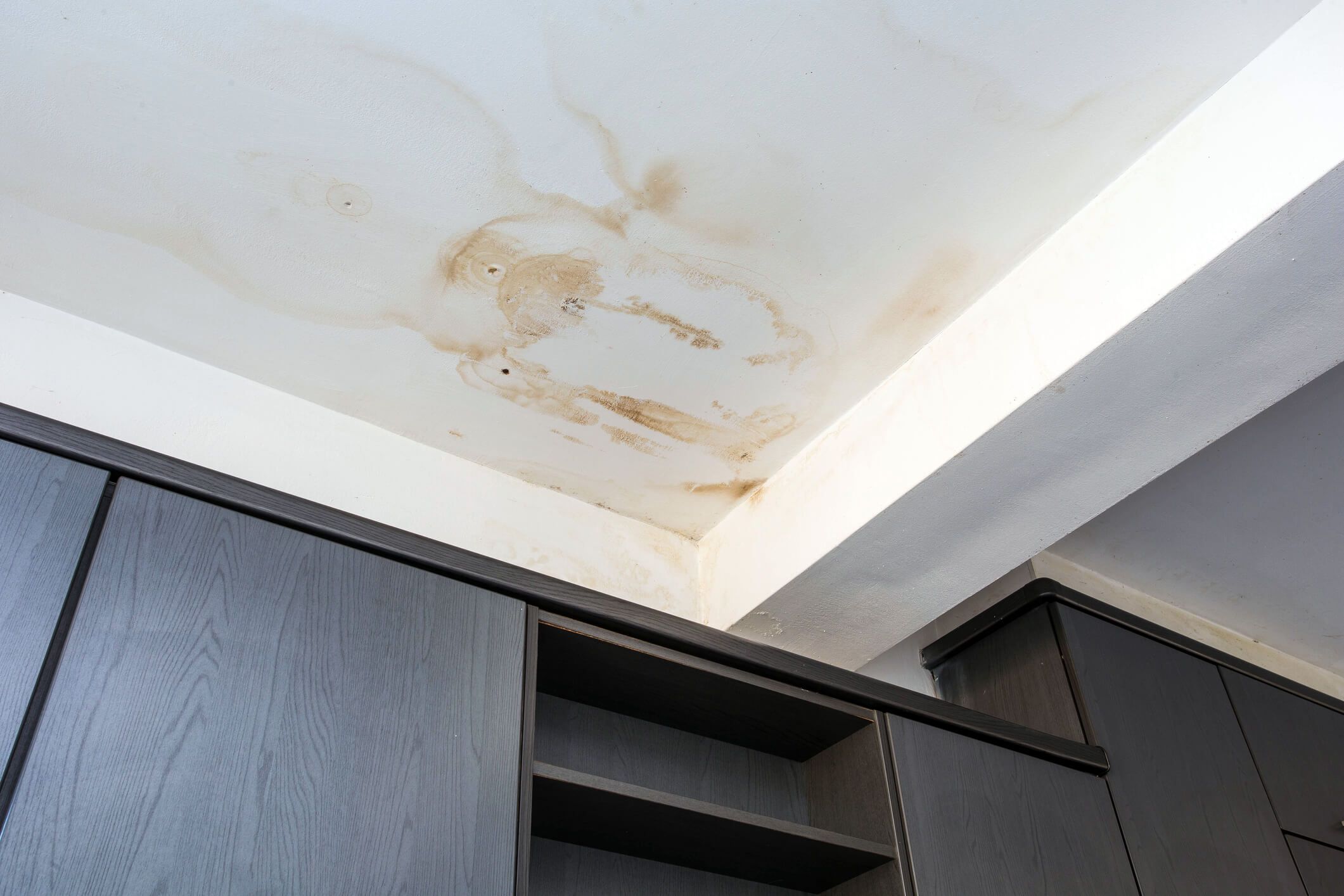Identifying the Source of the Leak: Leak From Bathroom To Kitchen Ceiling

A leak from your bathroom to your kitchen ceiling can be a frustrating and potentially costly issue. Pinpointing the source of the leak is crucial for addressing the problem effectively. Several factors can contribute to such leaks, and understanding these factors will help you diagnose and resolve the problem.
Common Causes of Leaks
Leaks from a bathroom to a kitchen ceiling are usually caused by issues with plumbing, water damage, or condensation. Here’s a breakdown of each:
- Plumbing Issues: Leaky pipes, faulty fixtures, or damaged seals in the bathroom can cause water to seep through the ceiling. This is often the most common culprit, especially in older homes where plumbing systems may be outdated or poorly maintained.
- Water Damage: Excessive water use in the bathroom, like overflowing tubs or showers, can saturate the surrounding materials and eventually lead to water damage. This can weaken the ceiling and allow water to penetrate to the kitchen below.
- Condensation: Excessive moisture in the bathroom, particularly from showers or baths, can condense on cold surfaces, such as the ceiling. This moisture can eventually lead to water damage and leaks.
Inspecting the Bathroom for Leaks
To effectively identify the source of the leak, a thorough inspection of the bathroom is necessary. Here’s a step-by-step guide:
- Check the Pipes: Begin by inspecting all visible pipes in the bathroom, including those behind the toilet, sink, and bathtub. Look for any signs of leaks, such as dripping, dampness, or rust.
- Examine Fixtures: Carefully inspect all bathroom fixtures, including the toilet, sink, bathtub, and shower. Look for signs of leaks, such as dripping faucets, cracked or loose fixtures, or water pooling around the base of the fixtures.
- Inspect the Shower/Tub Area: Pay close attention to the shower or bathtub area, as this is often the source of leaks. Check for cracks in the grout, loose tiles, or damaged caulk.
Possible Leak Sources and Solutions, Leak from bathroom to kitchen ceiling
The following table Artikels common leak sources, their signs, inspection methods, and potential solutions:
| Possible Cause | Signs | Inspection Methods | Potential Solutions |
|---|---|---|---|
| Leaky Pipes | Dripping, dampness, rust, water stains on the ceiling | Visual inspection, running water and listening for leaks | Pipe repair or replacement, tightening connections, sealing leaks |
| Faulty Fixtures | Dripping faucets, cracked or loose fixtures, water pooling around the base of the fixtures | Visual inspection, testing fixtures, checking for loose or damaged parts | Fixture repair or replacement, tightening connections, replacing worn-out parts |
| Damaged Shower/Tub Seals | Water pooling around the base of the shower or tub, cracked grout, loose tiles, damaged caulk | Visual inspection, running water and observing for leaks, testing the shower or tub for leaks | Resealing the shower or tub, replacing grout, repairing or replacing damaged tiles, re-caulking |
| Condensation | Dampness on the ceiling, mold or mildew growth | Visual inspection, checking for excessive moisture in the bathroom, checking for proper ventilation | Improving ventilation, using exhaust fans, reducing moisture in the bathroom |
Understanding the Damage

A leak from the bathroom to the kitchen ceiling can cause significant damage, affecting not only the aesthetics of your home but also potentially impacting its structural integrity. Understanding the extent of the damage is crucial for effective repairs and preventing further complications.
Types of Water Damage
Water damage can be categorized into three main types:
- Surface Damage: This involves damage to the visible surfaces, such as the ceiling, walls, and flooring. It might manifest as discoloration, warping, or peeling paint.
- Structural Damage: This affects the load-bearing elements of the building, such as the beams, joists, and walls. It can lead to weakened structures, sagging ceilings, or even collapses if left unaddressed.
- Hidden Damage: This refers to damage that is not immediately visible and can be concealed within walls, ceilings, or behind fixtures. It might involve rotted wood, mold growth, or corrosion of metal components.
Assessing the Extent of the Damage
A thorough assessment is essential to determine the full extent of the damage and guide repair efforts. This involves a multi-pronged approach:
- Visual Inspection: Carefully examine the affected areas, looking for visible signs of damage, such as water stains, peeling paint, warping, or sagging. Note the location and extent of the damage.
- Moisture Detection: Use a moisture meter to measure the moisture levels in the affected areas. This can help identify areas with high moisture content, indicating potential hidden damage.
- Structural Checks: If you suspect structural damage, it’s crucial to consult a qualified structural engineer. They can assess the integrity of the load-bearing elements and recommend appropriate repairs.
Repairing and Preventing Future Leaks

Once you’ve identified the source of the leak and assessed the damage, it’s time to address the problem and prevent future occurrences. This section will guide you through the common repair methods, sealing techniques, and preventive measures to ensure a leak-free bathroom and kitchen.
Repairing Leaks
Repairing a leak from the bathroom to the kitchen ceiling involves addressing the source of the leak. Common repair methods include:
- Pipe Repair: Leaky pipes are a common cause of bathroom leaks. Repairing a leaky pipe involves identifying the leak location, isolating the water supply, and replacing or patching the damaged section of the pipe. For minor leaks, pipe sealants or epoxy can be used. For major leaks, pipe replacement may be necessary.
- Fixture Replacement: If the leak originates from a faulty fixture, such as a leaky faucet or showerhead, replacing the fixture is often the best solution. This involves turning off the water supply to the fixture, disconnecting the old fixture, and installing the new one.
- Sealing: Leaks can also occur due to gaps or cracks in the bathroom’s plumbing system. These gaps can be sealed with caulk, waterproof sealant, or specialized plumbing tape.
Sealing a Leak in the Bathroom
Proper sealing is crucial to prevent leaks from spreading and causing further damage. Here’s a guide on how to seal a leak in the bathroom:
- Caulking: Caulking is a common method for sealing gaps and cracks in the bathroom. It involves applying a flexible sealant to the affected areas. Choose a caulk specifically designed for bathrooms, as it will be resistant to moisture and mildew.
- Waterproofing: Waterproofing is another effective way to prevent leaks. This involves applying a waterproof membrane to the bathroom floor, walls, and shower area. Waterproofing membranes create a barrier that prevents water from penetrating the underlying structure.
- Sealant Application: Sealant application is a critical step in preventing leaks. Ensure you use the right type of sealant for the specific application, such as silicone sealant for tubs and showers, polyurethane sealant for concrete, and epoxy sealant for pipes.
Preventing Future Leaks
Regular maintenance, water conservation practices, and professional inspections can significantly reduce the risk of future leaks:
- Regular Maintenance: Regularly inspect your bathroom’s plumbing system for signs of leaks or damage. This includes checking pipes, fixtures, and seals. Tighten loose fittings, replace worn-out parts, and address any leaks promptly.
- Water Conservation Practices: Reduce water usage in the bathroom by using low-flow showerheads, faucets, and toilets. This not only conserves water but also reduces the strain on your plumbing system, minimizing the risk of leaks.
- Professional Inspections: Schedule regular professional inspections of your bathroom’s plumbing system. A qualified plumber can identify potential problems before they escalate into major leaks.
